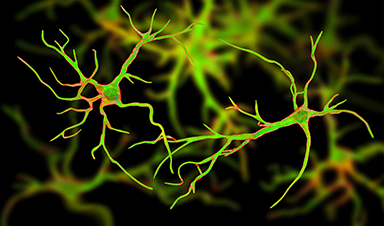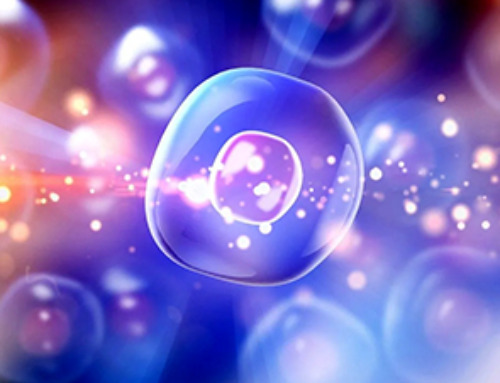A new genetic study shows that just one extra cup of instant coffee a day could significantly increase your risk of developing dry AMD, shedding fresh light on how our daily beverage choices may shape long-term eye health.
In a recent study published in the journal Food Science & Nutrition, researchers utilized an extensive genomic dataset comprising more than 500,000 individuals, along with advanced genetic correlation and Mendelian randomization analyses, to investigate the causal associations between coffee consumption and the risk of age-related macular degeneration (AMD).
Study findings revealed a statistically significant genetic causal association between instant coffee intake and the subsequent risk of dry AMD. In contrast, ground coffee and decaffeinated coffee demonstrated no such associations, highlighting that based on this research, adverse coffee-AMD links appear to be exclusive to instant coffee. The study found that each standard deviation increase in instant coffee consumption corresponded to a substantially increased risk of the disease.
Background
Age-related macular degeneration (AMD) is an ocular disease characterized by damage to the macula, resulting in blurry vision that progressively deteriorates. AMD is the leading cause of vision loss among older people worldwide, estimated to impact 8.7% of adults (196 million cases in 2020). As the global population ages, AMD prevalence is expected to surge in the coming decades (~240 million cases by 2040).
While recent genetic research has identified several correlations between individual genotypes (susceptibility genes) and AMD development, the disease’s underlying mechanisms and modifiable risk factors (health behaviors like diet and physical activity) remain comparatively understudied. While dietary supplements and clinical interventions (e.g., laser treatment) can slow AMD progression, the condition is irreversible, underscoring the need for prevention-focused research and policy.
While only a handful of epidemiological studies have investigated the role of coffee, one of the world’s most popular beverages, in the pathology of AMD, they report mixed and sometimes conflicting results. Most of these investigations are cohort studies and are therefore vulnerable to biases (e.g., reverse causation, confounding factors), which limits their clinical reliability. Furthermore, none of these studies have differentiated between coffee subtypes (decaffeinated, ground, or instant).
About the study
Biobank & Finngen) in tandem with genetic correlation and Mendelian randomization (MR) analyses to establish causal associations between different forms of coffee consumption and subsequently AMD risk.
Coffee consumption data were obtained from the UK Biobank GWAS summary statistics, including type (total coffee, n = 105,037; decaffeinated, n = 62,072; ground, n = 72,276; or instant, n = 180,764) and amount of coffee intake. AMD data were obtained from the Finngen GWAS dataset, including wet AMD (case = 5,890, control = 300,152) and dry AMD (case = 7,589, control = 298,486). The study’s Mendelian Randomization approach used genetic variants as a proxy for coffee intake, a method that inherently minimizes the influence of traditional confounding factors like diet and lifestyle. This approach relies on key assumptions, including that the selected genetic variants influence AMD only through their effect on coffee consumption and not through other biological pathways (a concept known as pleiotropy), for which the researchers conducted sensitivity tests.
The study design and analyses adhered to the Strengthening the Reporting of Observational Studies in Epidemiology using Mendelian Randomization (STROBE-MR) guidelines and comprised the following:
First, linkage-disequilibrium score regression (LDSC) analyses were used to quantify whether genetic variants associated with subtype-specific coffee intake also correlate with AMD risk. Second, two-sample univariable Mendelian randomization (UVMR) models were used to assess causality using GWAS-derived single-nucleotide polymorphisms (SNPs). Finally, Bayesian colocalization analysis was used to identify shared genetic variants between subtype-specific coffee consumption and AMD risk.
Study findings
Genetic correlation (LDSC) analyses revealed a significant overlap between the genetic predisposition to instant coffee intake and the subsequent risk of dry AMD, suggesting shared DNA signals between the two traits across the human genome. In contrast, other subtypes of coffee consumption showed no such correlation. Furthermore, no association was observed between coffee intake and the risk of wet AMD.
UVMR analyses confirmed these findings and established a causal link. Specifically, each standard deviation increase in instant coffee consumption was associated with a 7.92-fold increased risk of dry AMD (Odds Ratio [OR] = 7.92; 95% Confidence Interval: 1.79 to 35.15; p = 0.006). After statistical correction for multiple comparisons, the finding remained significant (adjusted p = 0.048). Sensitivity analyses were also conducted to support the robustness of these results.
Colocalization analysis did not detect any shared genetic variants or genome regions between coffee intake and AMD incidence. These findings suggest that processing byproducts, additives, or chemical alterations resulting from dehydration and reconstitution methods unique to instant coffee may contribute to the risk of dry AMD. The paper suggests that instant coffee can contain acrylamide, oxidized lipids, and other compounds not present in fresh brews.
Conclusions
The present study establishes a statistically significant causal genetic association between the consumption of instant coffee and the risk of dry AMD, though the precise magnitude of this risk has a wide margin of uncertainty, as indicated by the broad confidence interval. While the study datasets were derived from a predominantly European cohort, thereby limiting their global generalizability, the causal nature of the observed results prevents their dismissal due to dietary confounds.
Study results suggest that patients with early-stage AMD and individuals with a genetic predisposition to AMD might consider reducing their intake of instant coffee, opting instead for fresh brews. Clinicians and public health policymakers should weigh this evidence when advising patients about the potential drawbacks of highly processed foods like instant coffee.
- Jia, Q., Zha, Z., Li, S., Zhang, Y., Ke, L., & Liu, S. (2025). Genetic Correlation and Mendelian Randomization Analyses Support Causal Relationships Between Instant Coffee and Age‑Related Macular Degeneration. Food Science & Nutrition, 13(6), DOI: 10.1002/fsn3.70439, https://onlinelibrary.wiley.com/doi/10.1002/fsn3.70439
News
Scientists Uncover Hidden Blood Pattern in Long COVID
Researchers found persistent microclot and NET structures in Long COVID blood that may explain long-lasting symptoms. Researchers examining Long COVID have identified a structural connection between circulating microclots and neutrophil extracellular traps (NETs). The [...]
This Cellular Trick Helps Cancer Spread, but Could Also Stop It
Groups of normal cbiells can sense far into their surroundings, helping explain cancer cell migration. Understanding this ability could lead to new ways to limit tumor spread. The tale of the princess and the [...]
New mRNA therapy targets drug-resistant pneumonia
Bacteria that multiply on surfaces are a major headache in health care when they gain a foothold on, for example, implants or in catheters. Researchers at Chalmers University of Technology in Sweden have found [...]
Current Heart Health Guidelines Are Failing To Catch a Deadly Genetic Killer
New research reveals that standard screening misses most people with a common inherited cholesterol disorder. A Mayo Clinic study reports that current genetic screening guidelines overlook most people who have familial hypercholesterolemia, an inherited disorder that [...]
Scientists Identify the Evolutionary “Purpose” of Consciousness
Summary: Researchers at Ruhr University Bochum explore why consciousness evolved and why different species developed it in distinct ways. By comparing humans with birds, they show that complex awareness may arise through different neural architectures yet [...]
Novel mRNA therapy curbs antibiotic-resistant infections in preclinical lung models
Researchers at the Icahn School of Medicine at Mount Sinai and collaborators have reported early success with a novel mRNA-based therapy designed to combat antibiotic-resistant bacteria. The findings, published in Nature Biotechnology, show that in [...]
New skin-permeable polymer delivers insulin without needles
A breakthrough zwitterionic polymer slips through the skin’s toughest barriers, carrying insulin deep into tissue and normalizing blood sugar, offering patients a painless alternative to daily injections. A recent study published in the journal Nature examines [...]
Multifunctional Nanogels: A Breakthrough in Antibacterial Strategies
Antibiotic resistance is a growing concern - from human health to crop survival. A new study successfully uses nanogels to target and almost entirely inhibit the bacteria P. Aeruginosa. Recently published in Angewandte Chemie, the study [...]
Nanoflowers rejuvenate old and damaged human cells by replacing their mitochondria
Biomedical researchers at Texas A&M University may have discovered a way to stop or even reverse the decline of cellular energy production—a finding that could have revolutionary effects across medicine. Dr. Akhilesh K. Gaharwar [...]
The Stunning New Push to Protect the Invisible 99% of Life
Scientists worldwide have joined forces to build the first-ever roadmap for conserving Earth’s vast invisible majority—microbes. Their new IUCN Specialist Group reframes conservation by elevating microbial life to the same urgency as plants and [...]
Scientists Find a Way to Help the Brain Clear Alzheimer’s Plaques Naturally
Scientists have discovered that the brain may have a built-in way to fight Alzheimer’s. By activating a protein called Sox9, researchers were able to switch on star-shaped brain cells known as astrocytes and turn them into [...]
Vision can be rebooted in adults with amblyopia, study suggests
Temporarily anesthetizing the retina briefly reverts the activity of the visual system to that observed in early development and enables growth of responses to the amblyopic eye, new research shows. In the common vision [...]
Ultrasound-activated Nanoparticles Kill Liver Cancer and Activate Immune System
A new ultrasound-guided nanotherapy wipes out liver tumors while training the immune system to keep them from coming back. The study, published in Nano Today, introduces a biodegradable nanoparticle system that combines sonodynamic therapy and cell [...]
Magnetic nanoparticles that successfully navigate complex blood vessels may be ready for clinical trials
Every year, 12 million people worldwide suffer a stroke; many die or are permanently impaired. Currently, drugs are administered to dissolve the thrombus that blocks the blood vessel. These drugs spread throughout the entire [...]
Reviving Exhausted T Cells Sparks Powerful Cancer Tumor Elimination
Scientists have discovered how tumors secretly drain the energy from T cells—the immune system’s main cancer fighters—and how blocking that process can bring them back to life. The team found that cancer cells use [...]
Very low LDL-cholesterol correlates to fewer heart problems after stroke
Brigham and Women's Hospital's TIMI Study Group reports that in patients with prior ischemic stroke, very low achieved LDL-cholesterol correlated with fewer major adverse cardiovascular events and fewer recurrent strokes, without an apparent increase [...]





















